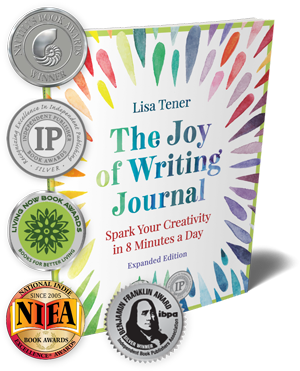 While speaking with a client about her audience, I had a sense that the audience for her book was different from the audience for the high-end program she was developing.
While speaking with a client about her audience, I had a sense that the audience for her book was different from the audience for the high-end program she was developing.
So, we went to the source, her muse, and asked her muse (during a guided visualization) to show her the audience for the program.
The author had thought of her audience as a cross between herself and the people in another program—people who were overweight.
In contrast, her muse showed her people who looked more fit, a woman and a man. The man held a briefcase. Both looked professional and stressed out. In fact, she could sense their impatience and that they both didn’t even want to spend too much time for the muse, “We have places to go, things to do!”
[bctt tweet=”What to Do When Your Audience Isn’t Whom You Thought it Was. #writingtips” username=”LisaTener”]
As I suggested questions to ask her muse, during the exercise, her muse identified people who were more in line with the people who had been calling her and trying to pick her brain for the expertise and knowledge she possessed.
The author felt intimidated by this highly successful, stressed out audience, so I suggested we ask her muse to help her identify with them and feel more comfortable and confident. Her muse responded, “There is an aspect of you that knows what these people are going through: both their pain and desire. You do know what they need and want. Tap into your own identification with their success and stress; then expand and exaggerate it.”
Other things you can do in exploring your audience and getting to know them:
- Send a survey to them asking about their pain, problems, hopes and dreams around the issue you are writing about.
- Do some research online. Ask a librarian for help if you’re not great at research or hire someone who is.
- Hold a focus group.
- Go somewhere where your audience hangs out virtually (a Facebook group, a blog, other social media). You may need to use hashtags to find their conversations. See what they write, what worries them, what engages them, etc.)
- Go somewhere where your audience hangs out in person (a bookstore, another type of store, a cafe). Listen to their conversations and see what you can glean about their interests.
- Read Amazon reviews for books that cater to the same audience as you. What do they like about these books? What do they say they want that’s missing?
- Think of people you know (family, clients, friends) who are part of this audience. Ask them about their needs, wants, hopes and dreams.
- This articles shares more information on how to research the markets for your book. And here’s how to write a book for the wrong market!
 For more help in clarifying your vision, goals, audience, as well as the content, tone, structure and features of your book, consider my self-study program, Quick Start to Kick Start Your book.
For more help in clarifying your vision, goals, audience, as well as the content, tone, structure and features of your book, consider my self-study program, Quick Start to Kick Start Your book.
Now through Saturday, June 8, you can save 25% on the digital version and purchase for only $72.75. Find out the details or order here.
What are you doing to understand your audience? What do you want to know about them? Share your insights and questions as a comment below.


